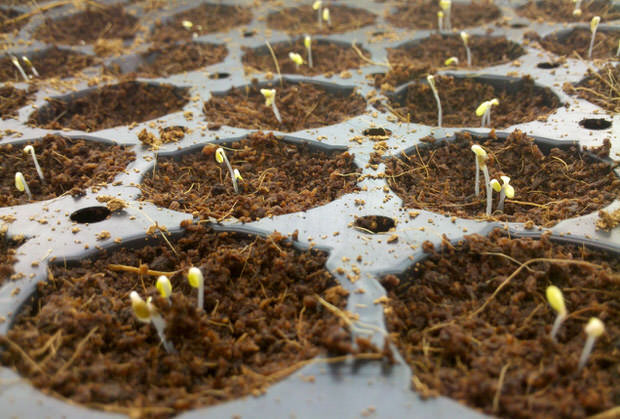






It’s a beautiful, chilly March day, and I’m dreaming about planting my garden this spring. While it’s definitely still too cold to plant my garden, with a little planning and preparation, I can start my vegetable garden indoors to be ready to plant outdoors as soon as the last frost passes.
Generally you can start vegetables from seed four to ten weeks before the last frost. Where I live the last frost occurs in the middle of May.
Some vegetables transplant easier than others. Lettuce, beets, broccoli, cabbage, cauliflower, eggplant, onions, peppers, and tomatoes generally transplant well. Carrots, peas, corn, cucumbers, pumpkins, beans, and squash are harder to transplant, so it is not recommended to start these plants from seed.
Vegetables can be successfully started from seed if you keep them the correct temperature and provide them with the appropriate amounts of light and moisture.
You can make your own seed starting mix by combining equal parts of peat moss, perlite, and vermiculite, which are all available at any garden supply store. You can use just about any container that will hold soil to plant your seeds, as long as you have drainage holes. You can buy seed starting trays that makes planting really easy. Just make sure your container is clean.
Plant the seeds as recommended on the seed packets. Cover the tray with a plastic cover or plastic wrap to help keep moisture in. Remove the cover or plastic wrap when seedlings appear. Keep soil moist with a misting spray bottle. Make sure the soil doesn’t gets too wet.
Keep your seedlings between 65-75 degrees. You can set them in a sunny windowsill, but it is best to use fluorescent lights up to 16 hours a day two to four inches above the seedlings.
When your seedlings start growing leaves, weed out the weakest looking plants, and start fertilizing once or twice a week.
When you see several sets of leaves, you can transplant the seedlings to individual pots filled with potting soil. If you transplant to a peat pot you can place this pot directly in the garden when it’s time to plant.
After the chance of frost has passed, gradually toughen the plants for about two weeks before you plant them so that they can adjust to their new environment. Set them outside for a couple of hours a day to get used to their new conditions, gradually increasing the amount of time spent outside each day.
If you are not sure of the date of your last frost, or would like more information about growing vegetables in your area, you can contact your local agricultural extension office either by telephone or via their web site. They offer free, helpful gardening information for amateur gardeners.
Article By Rachel Paxton.
Rachel Paxton is a freelance writer and mom of four. For tips on vegetable gardening, growing flowers, herb gardening, attracting birds and butterflies to your garden, composting, and more, visit Garden-Diva.com. Rachel Paxton may be contacted at http://www.creativehomemaking.com
Copyright © www.100flowers.win Botanic Garden All Rights Reserved